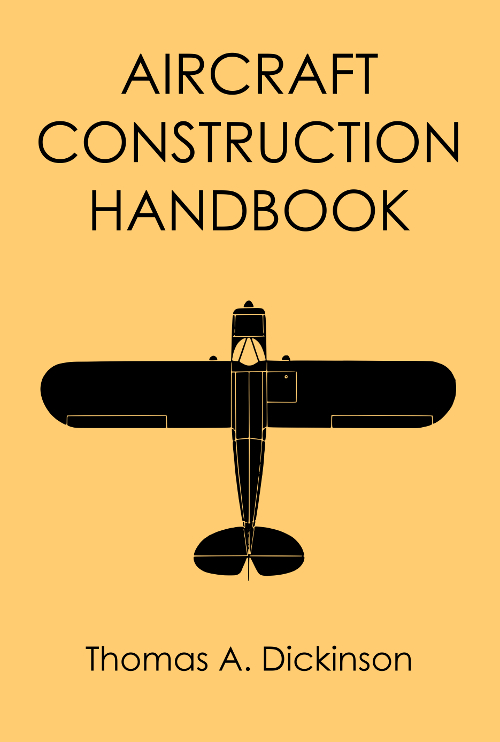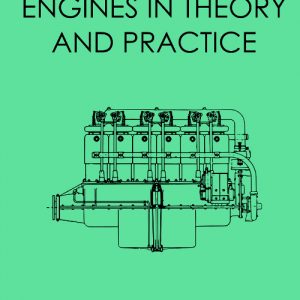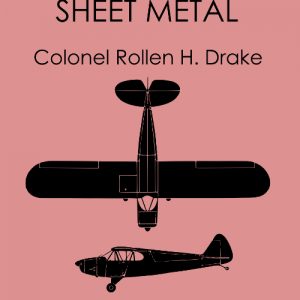Description
This is a high quality facsimile of Aircraft Construction Handbook by Thomas A. Dickinson, originally published in 1943.
Between the first page and the last page of this book you will find a complete and practical explanation of the process of constructing aircraft. The language is simple and can be easily understood by a person who has not had special training. There are photographs and diagrams every step of the way. At the end of the book is a dictionary of common and troublesome terms.
The Setup of an Aircraft Plant: How it is laid out; how it operates; what qualifications a man should have for various kinds of work; where he will do best.
Aerodynamics: Simple explanation of what makes a plane fly.
Aircraft Types and Nomenclature: How planes are classified, as “PB,” “PT,” etc; the different types of wings; names of the parts of the plane.
Aircraft Design Principles: How a plane is created for the purpose it is meant to perform; mock-up and lofting.
Materials: Metal and other substances used; types of steels; aluminum; cadmium plating; heat treatment; plastics.
Shop Practice: Blueprint reading; specifications; standard parts; bending allowances; use of tools, etc.; instruments; the right way and the wrong way.
Assembly: Jigs and fixtures; riveting; causes of rivet rejection; welding.
Inspection: Complete information on what the requirements are; how they are passed; reasons for rejection, etc.
Appendix: Every conceivable kind of helpful table, chart, hint, etc., together with mathematical short cuts and other aids.
Glossary: A complete index of the words and terms that are part of the aircraft worker’s language.
If there is a reference to a certain kind of rivet, that rivet is pictured on the spot. If a blueprint is discussed, a drawing is shown on the spot. This book is a godsend to any person who has not had all the special training he would like, or to a person who would like to brush up on his technical knowledge and increase his skill.
About Thomas A. Dickinson:
The author combines wide practical experience in the aircraft industry with proven ability to get across to the reader exactly what he wants to say, having been engaged in newspaper reporting before he entered the aviation industry. Since then he has served in the Ford Motor Company’s Aircraft Division, thence in the Flight and Service Department at Consolidated Aircraft Corporation, where he was a Navy inspector.
Chapters
How an Airplane Factory Operates
Administration
Customer Representatives
Experimental and Planning
Production Engineering
Project Coordinators
Plant Maintenance
Parts and Processes
Primary Assembly
Final Assembly
Inspection
Salvage
Flight Test and Service Departments
Aerodynamics
Air Forces
The Davis and Northrup Wings
Aircraft Types and Nomenclature
General Construction Characteristics
Stationing
Power Plant Nomenclature
Surface Controls
Wing Nomenclature
Fuselage Nomenclature
Tail Sections
Landing Gear Nomenclature
Seaplanes, Flying Boats, and Amphibians
Aircraft Design Principles
Choosing and Airfoil Section
Wind-Tunnel Tests
Mock-Up
Stress Analysis
Detailed Design
Lofting
Materials and Processes
Metallurgy
Metallurgical Tests
Heat Treatment
Annealing
Aluminum and Its Alloys
Surface Protection for Aluminum Alloys
Working with Aluminum and Its Alloys
Airplane Steels
Special Steel Processes
Magnesium and Its Alloys
Beryllium
Alloying Elements
Metalizing or Metal Spraying
Cadmium Plating
Plastics
Dopes and Fabrics
Neoprene and Thiokol
Shop Practice
Drafting
Drafting Rules
Specifications
Bolts and Screws
Nuts and Washers
Turnbuckle Assemblies
Control Pulleys Cotter Pins
Taper Pins
Dzus Fasteners
Dill Lok-Skru Fastener
Explosive Rivets
Goodrich Riv-Nuts
Measuring Instruments
Bending Allowances
Aircraft Tubing and Fittings
Flaring
Torque Wrenches
Socket Wrenches
Screwdrivers
Taps and Dies
Files
Joggling
Assembly
Jigs and Fixtures
Riverting
Welding
Inspection
Types of Inspection





Reviews
There are no reviews yet.